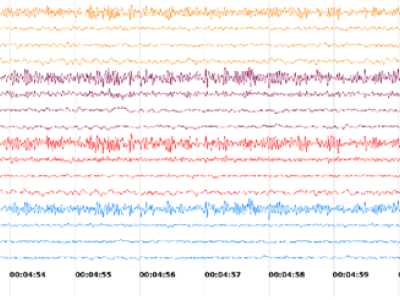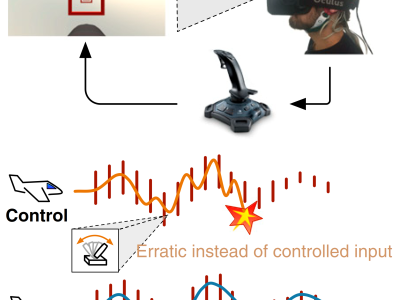Electrical Input Filters of Ganglion Cells in Wild Type and Degenerating rd10 Mouse Retina as a Template for Selective Electrical Stimulation

- Citation Author(s):
- Submitted by:
- Daniel Rathbun
- Last updated:
- DOI:
- 10.21227/zr56-jb08
- Data Format:
 84 views
84 views
- Categories:
- Keywords:
Abstract
Bionic vision systems are currently limited by indiscriminate activation of all retinal ganglion cells (RGCs) – despite the dozens of known RGC types which each encode a different visual message. Here, we use spike-triggered averaging to explore how electrical responsiveness varies across RGC types toward the goal of using this variation to create type-selective electrical stimuli. A battery of visual stimuli and a randomly distributed sequence of electrical pulses were delivered to healthy and degenerating (4-week-old rd10) mouse retinas. Ganglion cell spike trains were recorded during stimulation using a 60-channel microelectrode array. Hierarchical clustering divided the recorded RGC populations according to their visual and electrical response patterns. Novel electrical stimuli were presented to assess type-specific selectivity. In healthy retinas, responses fell into 35 visual patterns and 14 electrical patterns. In degenerating retinas, responses fell into 12 visual and 23 electrical patterns. Few correspondences between electrical and visual response patterns were found except for the known correspondence of ON visual type with upward deflecting electrical type and OFF cells with downward electrical profiles. Further refinement of the approach presented here may yet yield the elusive nuances necessary for type-selective stimulation. This study greatly deepens our understanding of electrical input filters in the context of detailed visual response characterization and includes the most complete examination yet of degenerating electrical input filters.
Instructions:
Data from: “Characterizing ganglion cell types based on visual responses and electrical input filters in wild type and rd10 degenerated mouse retina”.
The dataset includes spike times of 29 (22 is used for paper) wild type and 5 rd10 retinas. Extracellular data is recorded with 64 channels multielectrode array (Multi Channel Systems).
(Python files to run the algorithm*) | |
file name | Remark |
run_wildtype.py | To run clustering algorithm for wild type data. |
run_rd10.py | To run clustering algorithm for rd10 data. |
* Check https://github.com/mhhennig/rgc-classification for more info.
Matlab_data folder: includes:
1: the raw data of each recording. Including spike times and trigger times of both visual and electrical stimulation in .mat format. Each file contains:
Variables in each recording file (raw data, specified with recording date) | |
Variables name | Remarks |
A1a
A2a A3a | Photodiode signal monitoring the global visual stimulation brightness. (used only for calibration and ‘reality check’. TTL triggers of electrical stimulation. TTL triggers of visual stimulation. |
adch_channel_unit | Spike time of each unit. One channel can have more than one unit. |
trgss | Triggers of visual stimulation sorted by name of stimulus. |
2: Electrical STAs which are stored in separate files in .mat. Specified by ‘e_STA’ at the beginning of each file.
3: Triggers which are stored in separate files. In .mat. Specified by ‘trigger’ at the end of each file.
4: Report text files shows number of trial repetitions for each stimulus.








